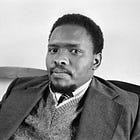We’ve seen how the 1968 UNESCO Biosphere Conference suggested Biosphere Reserves be set aside [rec. 15]. And we’ve seen how lands become Biosphere Reserves, through Thomas Lovejoy’s Debt-for-Nature Swap, an idea first floated in the New York Times in 1984. We’ve also seen how the Michael Sweatman’s 1986 idea of a World Conservation Bank came to be, through the Global Environment Facility, and how they structure the hugely one-sided Blended Finance deals using a Landscape Approach, supposedly first suggested by the ‘From Billions to Trillions‘1 document in April 2015. And more recently, we’ve seen Douglas Eger’s Intrinsic Exchange Group2 attempt to create a holding company of type Natural Asset Company for sakes of floating ecosystem service leases on the stock exchanges.
And in synergy thereof - we’ve seen how carbon credits via ecosystem services from Debt-for-Nature swapped UNESCO Biosphere Reserves, monetised through Blended Finance deals structured by the Global Environment Facility aka World Conservation Bank are meant to eventually end up in holding companies of type Natural Asset Companies, and floated on the stock exchanges.
Of course, the last part was brought to a temporary stop, but that naturally only means that they will try again3, of which a recent New York Times article serves as evidence.
Of course, that 2015 officially marked the launch date of blended finance appears more than a little odd, as Moringa was founded in 20104.
And in that regard, Moringa’s very own whitepaper5 could not possibly be more explicit -
‘Moringa was born in 2010 from a meeting between the two founders, Clément Chenost and Hervé Bourguignon, of ONF International and the Edmond de Rothschild group. They were brought together over a shared conviction–urgently providing solutions to environmental issues through sustainable land management.
The theme was new and the approach appealing. Development Finance Institutions and private investors joined the project. Moringa thus became one of the pioneers of “blended finance” by responding to two major challenges‘
But I already covered that whitepaper in detail in the article on Blended Finance. And with that said, let’s get the links to the above out of the way -
But the material used by most articles on ecosystem services don’t make an attempt to trace back the origin of the term itself; ‘ecosystem service’. And - sure - while there are more direct ways to discover that the term ‘ecosystem service’ itself was coined by Paul Ehrlich in the early 80’s, there are still questions relating to the valuation method itself, and the Contingent Valuation Model upon which it hinges.
So do try to forget about Club of Rome’s Paul Ehrlich, who incidentally also wrote the fear-mongering (and repeatedly proven wrong) ‘Population Bomb’ book back in 19686… which, incidentally, also drags in a contemporarily relevant ‘Spaceship Earth’.












